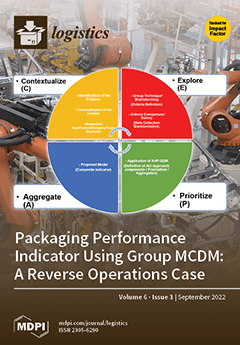Over the most recent couple of years, the Internet of Things and other empowering innovations have been logically utilized for digitizing the vegetable supply chain (VSC).
Background: The unpredictable examples and complexity inserted in enormous data dimensions present a test for an
[...] Read more.
Over the most recent couple of years, the Internet of Things and other empowering innovations have been logically utilized for digitizing the vegetable supply chain (VSC).
Background: The unpredictable examples and complexity inserted in enormous data dimensions present a test for an orderly human master examination. Hence in an information-driven setting, soft computing (SC) has accomplished critical energy to investigate, mine, and concentrate confidential information data, or tackle complex improvement issues, finding some harmony between good productivity and maintainability of vegetable supply frameworks.
Methods: This paper presents a new and diverse scientific classification of VSC issues from the SC methodology. It characterizes VSC issues and sorts them in light of how they be demonstrated according to the SC perspective. Moreover, we examine the SC methodologies commonly utilized in each phase of the VSC and their related classes of issues. Accordingly, there is an issue in distinguishing and characterizing VSC issues according to a more extensive point of view, enveloping the different SC strategies that can apply in various phases (from creation to retailing), and recognizing the issues that emerge in these phases according to the SC viewpoint.
Results: We likewise acquaint some rules with the assistance of VSC analysts and specialists to settle on appropriate strategies while resolving specific issues they could experience. Even though a few latest examinations have arranged the SC writing in this field, they are situated towards a solitary group of SC strategies (a gathering of techniques that share standard qualities) and survey their application in VSC phases.
Conclusions: We have suggested a novel approach and complete scientific classification of vegetable supply chain concerns about soft computing. We present a view of three delegate supply chains: cruciferous vegetables, dark green leafy vegetables, and tomatoes. We assembled the scientific type in light of different parts to arrange vegetable supply chain issues as per how they can be demonstrated utilizing soft computing methodologies.
Full article





